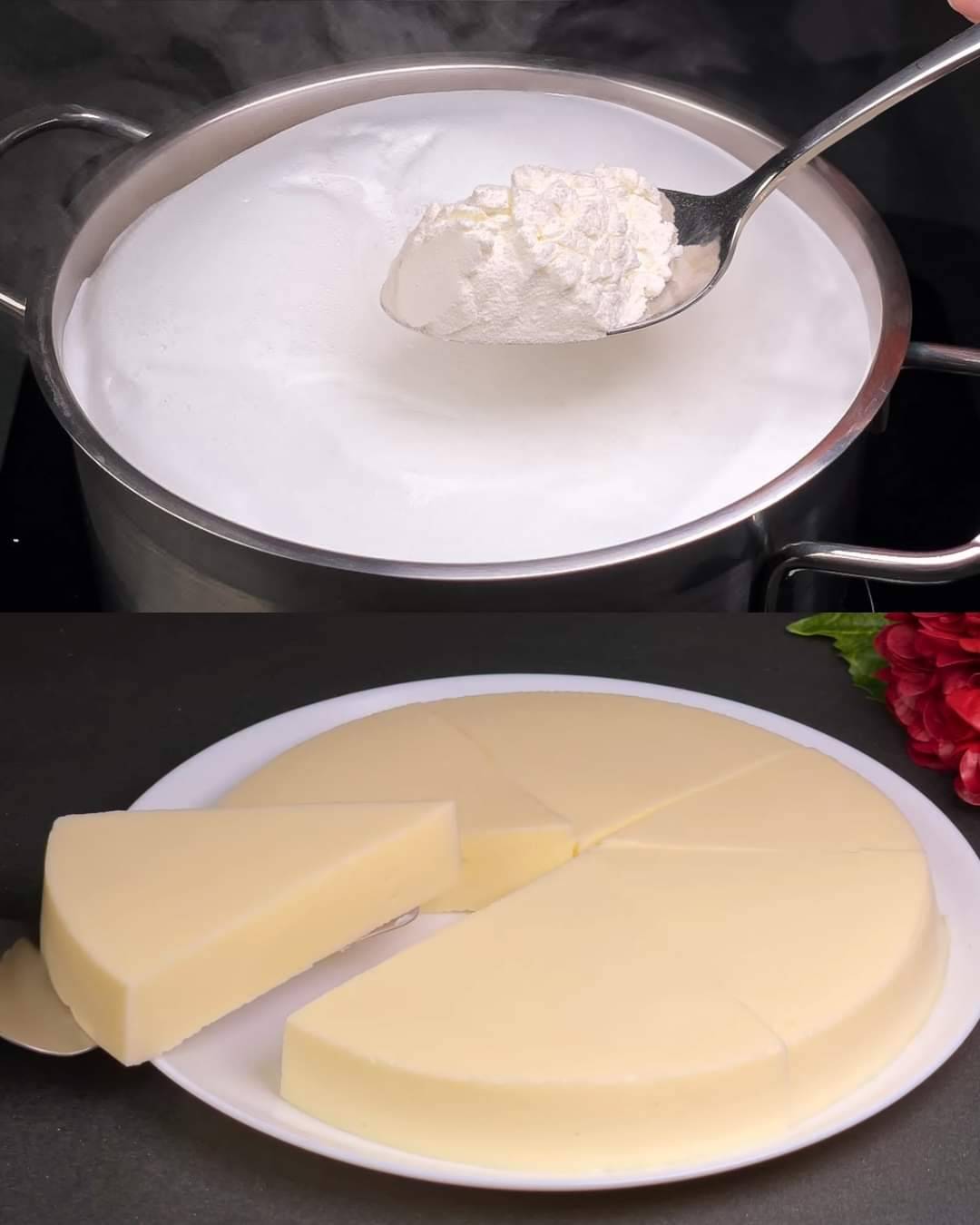Directions:
-
- Heat the Milk:
-
- Pour 1 liter of milk into a large saucepan and slowly heat over medium heat. Stir occasionally to prevent scorching.
- Heat the milk until it reaches 85°C (185°F), just below boiling.
-
- Add Lemon Juice (or Vinegar):
- Once the milk is hot, remove it from the heat and stir in 2 tablespoons of lemon juice or vinegar. The milk will begin to curdle, separating into curds (solids) and whey (liquid).
- Heat the Milk:
-
- Curdle the Milk:
- Gently stir the mixture for a few seconds, then cover and let it sit for 10-15 minutes to allow the curds to fully form.
- Drain the Curds:
-
- Place a cheesecloth or clean kitchen towel over a colander, and pour the curdled milk through it to drain the whey. Let the curds drain for about 30 minutes for a soft cheese or longer for a firmer texture.
-
- Season and Mix:
- After draining, transfer the curds to a bowl. Stir in salt to taste (about 1/2 teaspoon) and 10 g butter for extra creaminess. Mix in any additional herbs or spices at this stage if desired (e.g., chopped chives, garlic powder, or pepper).
- Curdle the Milk:
- Shape and Chill:
- For a firmer cheese, wrap the curds in the cheesecloth and gently squeeze out any remaining whey. Shape the cheese into a ball or log, cover with cling film, and refrigerate for 2-3 hours until set.
Serving Suggestions:
-
- Spread your homemade cheese on crackers, toast, or bagels.
- Use as a filling for sandwiches or wraps.
- Crumble over salads or add to pasta dishes.
Cooking Tips:
-
- Milk: Whole milk gives the best results for creamy cheese, but you can use low-fat milk if preferred.
- Flavor variations: Customize your cheese with herbs like thyme, rosemary, or parsley, or add spices like paprika for a flavor boost.
Nutritional Benefits:
-
- High in protein from the milk, supporting muscle repair and growth.
- Calcium-rich, promoting bone health.
Dietary Information:
- Vegetarian-friendly if using plant-based rennet (if needed).
- Can be made lactose-free using lactose-free milk.
Nutritional Facts (per 30g serving, approx.):
-
- Calories: 75
-
- Protein: 4g
- Fat: 6g
- Carbohydrates: 1g
- Calcium: 10% of daily value
Storage:
- Store your homemade cheese in an airtight container in the refrigerator for up to 5 days.
Why You’ll Love This Recipe:
-
- Simple and Quick: Easy to make with minimal ingredients.
-
- Customizable: Flavor it to your liking with herbs and spices.
- Fresh and Delicious: Enjoy fresh cheese made right in your kitchen.
- Healthy: Homemade cheese has no preservatives or artificial additives.
Conclusion:
Making homemade cheese is a rewarding experience that results in fresh, creamy, and customizable cheese. Whether you enjoy it spread on bread, crumbled into salads, or used in recipes, this cheese is a versatile addition to your meals. Once you try making your own cheese, you’ll never go back to store-bought!
Frequently Asked Questions (FAQs):
-
- Can I use any type of milk for this recipe?
Yes, whole milk is preferred, but you can also use low-fat or lactose-free milk. - What if my milk doesn’t curdle?
Ensure the milk is hot enough and add a bit more lemon juice or vinegar if needed.
- Can I use any type of milk for this recipe?
-
- How long can I store homemade cheese?
Homemade cheese lasts up to 5 days in the refrigerator. - Can I freeze homemade cheese?
Freezing is not recommended, as the texture may change after thawing. - Can I add flavors to the cheese?
Yes, you can mix in herbs, spices, garlic, or even dried fruit for different flavors.
- How long can I store homemade cheese?
-
- Why is my cheese too soft?
If your cheese is too soft, let it drain for longer or refrigerate it for a firmer texture. - Can I use plant-based milk?
No, this recipe works best with dairy milk due to the curdling process. - How can I make the cheese creamier?
Adding butter or cream will give your cheese a creamier texture.
- Why is my cheese too soft?
- Can I use rennet instead of lemon juice or vinegar?
Yes, rennet can be used, but lemon juice or vinegar is more commonly used in home recipes for simplicity. - What can I do with the leftover whey?
Whey can be used in smoothies, soups, or for making bread. It’s nutritious and high in protein.

